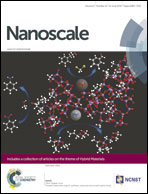Nanowire array chips for molecular typing of rare trafficking leukocytes with application to neurodegenerative pathology†
Abstract
Despite the presence of the blood–brain barrier (BBB) that restricts the entry of immune cells and mediators into the central nervous system (CNS), a small number of peripheral leukocytes can traverse the BBB and infiltrate into the CNS. The cerebrospinal fluid (CSF) is one of the major routes through which trafficking leukocytes migrate into the CNS. Therefore, the number of leukocytes and their phenotypic compositions in the CSF may represent important sources to investigate immune-to-brain interactions or diagnose and monitor neurodegenerative diseases. Due to the paucity of trafficking leucocytes in the CSF, a technology capable of efficient isolation, enumeration, and molecular typing of these cells in the clinical settings has not been achieved. In this study, we report on a biofunctionalized silicon nanowire array chip for highly efficient capture and multiplexed phenotyping of rare trafficking leukocytes in small quantities (50 microliters) of clinical CSF specimens collected from neurodegenerative disease patients. The antibody coated 3D nanostructured materials exhibited vastly improved rare cell capture efficiency due to high-affinity binding and enhanced cell–substrate interactions. Moreover, our platform creates multiple cell capture interfaces, each of which can selectively isolate specific leukocyte phenotypes. A comparison with the traditional immunophenotyping using flow cytometry demonstrated that our novel silicon nanowire-based rare cell analysis platform can perform rapid detection and simultaneous molecular characterization of heterogeneous immune cells. Multiplexed molecular typing of rare leukocytes in CSF samples collected from Alzheimer's disease patients revealed the elevation of white blood cell counts and significant alterations in the distribution of major leukocyte phenotypes. Our technology represents a practical tool for potentially diagnosing and monitoring the pathogenesis of neurodegenerative diseases by allowing an effective hematological analysis of the CSF from patients.


 Please wait while we load your content...
Please wait while we load your content...